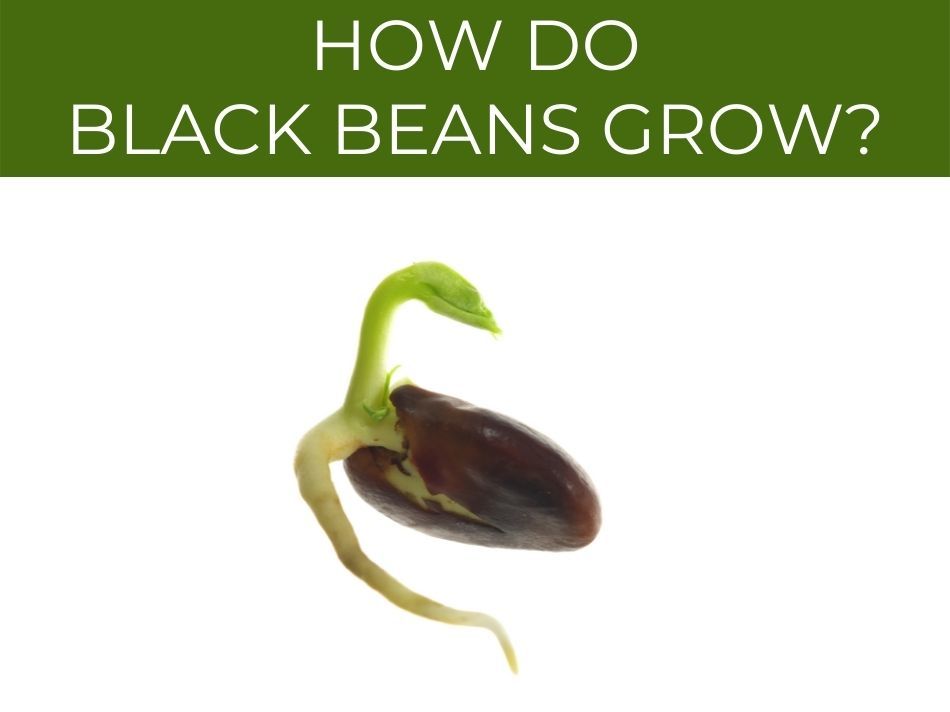Black beans, also known as Mexican beans, Tampico beans, or turtle beans, are hardy and tasty. Many cooks will add this type of bean to dishes for its nutritional value. Black beans can grow all around the world quickly with a bit of preparation and attention.
Black beans grow best in cool shady places, & should be planted outside after the last frost. Black beans need well-drained soil about 12” deep. Black bean plants need at least 4 – 6 hours of sunlight per day, and are harvested in fall when the bean pods are dry and the beans inside are black..
Black beans are a very nutrient-dense and versatile type of bean. They can be used in lots of ways, including salads, soups, tacos, dips, and even desserts. Black beans are high in fiber & protein, and are generally easy to grow at home or in your backyard garden.So let’s dig in & find out more!
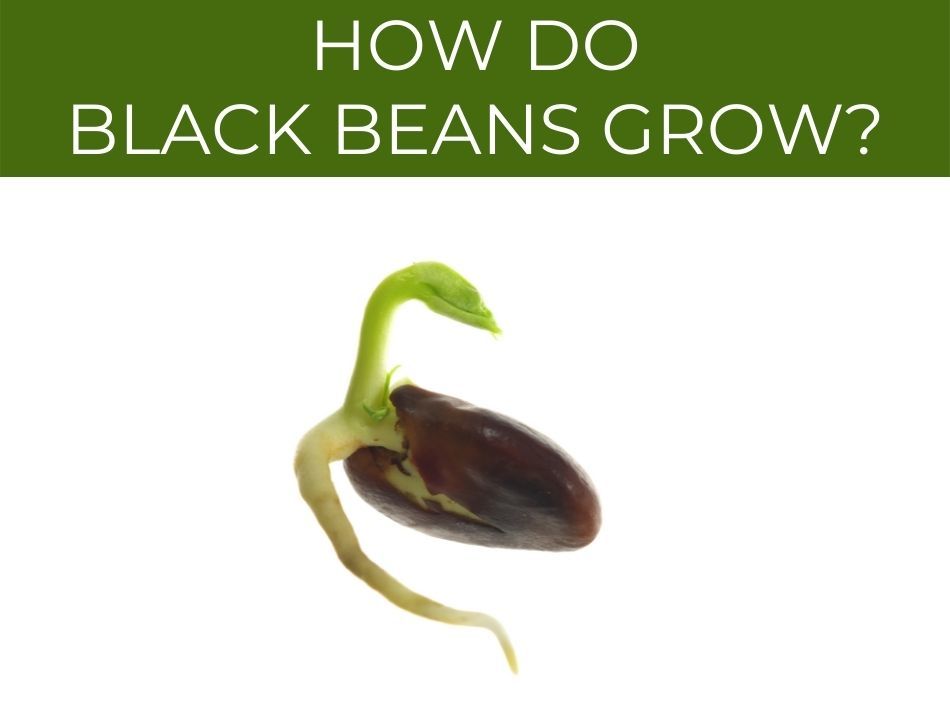
How do black beans grow?
Like other beans, black beans grow from seeds, and their life cycle goes through the following stages: seed sprouting, seedling, growing plant, flowering, setting fruit (i.e., the bean pods), ripening, and harvest.
For every person you plan to feed, you’ll need about 8 to 12 plants.
For a usable harvest, you’ll need many harvestable plants.
If you plan to grow, preserve, and dry black beans, you’ll need about 36 plants for each person you plan to feed.
Traditional black beans and vining black beans are easy to grow in large pots and produce different amounts of beans, so it’s important to use the black bean plant that works best for your consumption needs.
Find out if beans are a fruit or a vegetable.
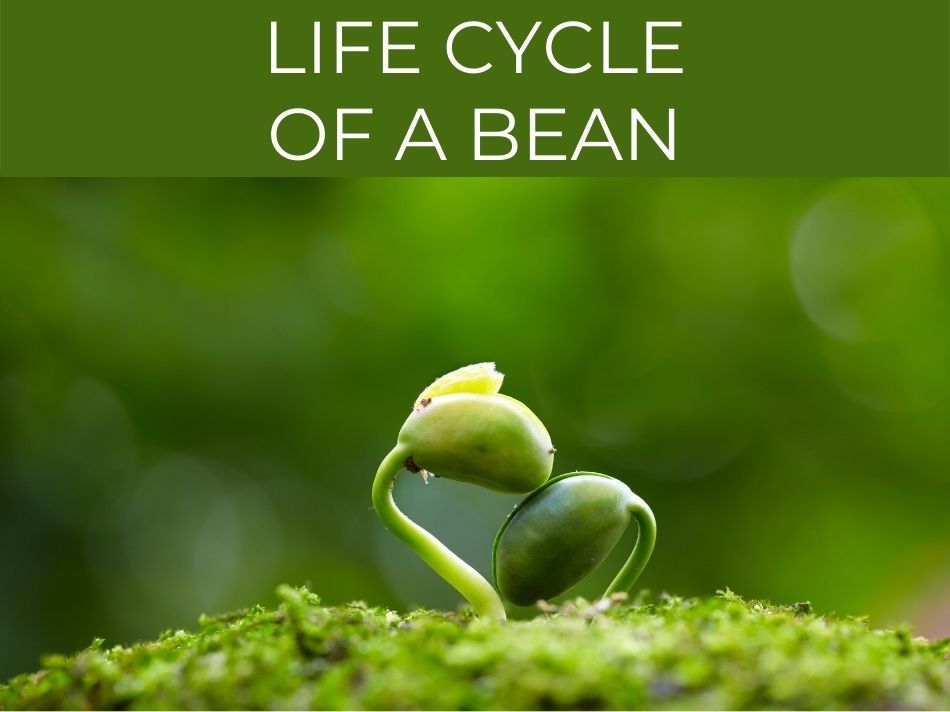
Life Cycle of a Bean
The life cycle of a bean follows these general stages: seed sprouting, seedling, maturing plant, flowering, setting fruit (i.e., the bean pods), ripening, and harvest. Like other seeds, bean seeds require water to allow sprouting.
Germination starts when the hard shell splits and softens to allow roots to grow downwards and a shoot to grow upwards.
Shortly after the shoot appears above the soil, leaves will grow.
As the shoot grows taller, more leaves will appear.
The bean plant will reach adulthood about six to eight weeks after germination, and flowers will begin to bloom.
After the flower fertilizes, seed pods develop and are harvested for food when they are done growing.
Depending on the weather, the life cycle of a bean takes about 90 to 140 days from the time a black bean plant is planted to yield a black bean that is ready to be dried, rinsed, and consumed.
To speed up the process, you can grow black bean plants indoors before replanting outdoors.
The remaining pods will dry and split, releasing black beans to restart the cycle.
The bean in a black bean plant grows in an enclosed pod that will eventually turn bright purple and be ready to be harvested.
Seeds are harvested from the pod when it dries or gets crispy and falls from the plant naturally.
Check out the full article on the life cycle of a bean plant.

Where do Black Beans Come From
Black beans come from Central America, like other bean varieties. Over 7,000 years ago, black beans originated in Central America. In recent decades different varieties of black beans were created, and Michigan is currently the largest producer of black beans.
The black bean has long been a staple of Latin American diets.
It is believed that the growing and rinsing process for black beans was developed in Central America.
Black beans are native to the Americas.
Black beans can be grown all over the world.
The state of Michigan is known for creating two types of black beans that are native to Michigan: the Zenith and Zorro.
See the complete article on where beans come from.
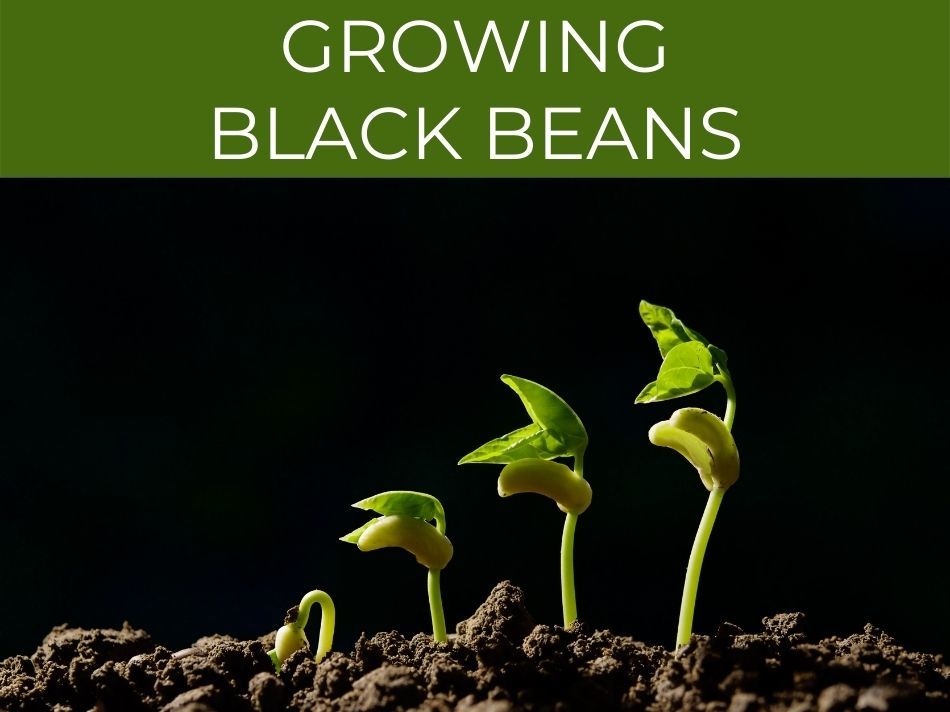
Growing Black Beans
It doesn’t take a lot of skill or experience to grow black beans.
Usually, black beans will begin to grow in a cool, shady spot that is fertilized.
Black beans don’t require as much fertilizer as other plants.
To grow black beans, soak beans in water for 3-4 hours, then plant ½” deep in well-drained soil. Seeds germinate in 7-10 days, and mature in 90 – 140 days, depending on growing conditions. Beans can be harvested when the seed pods are dry, and the beans inside are black and hard.
Most often, black beans are direct-sown and quick to germinate.
The plants can be planted in containers or outside in soil.
To get a jump start on planting, black beans can be grown indoors under grow lights about four weeks before the risk of frost passes.
A black bean plant can be considered sprouted if at least 50% of the plant has sprouted.
For best results, keep sprouting beans around 68 to 70-degrees.
Provide your bean plants with plenty of ventilation to allow for proper draining, and don’t overwater.
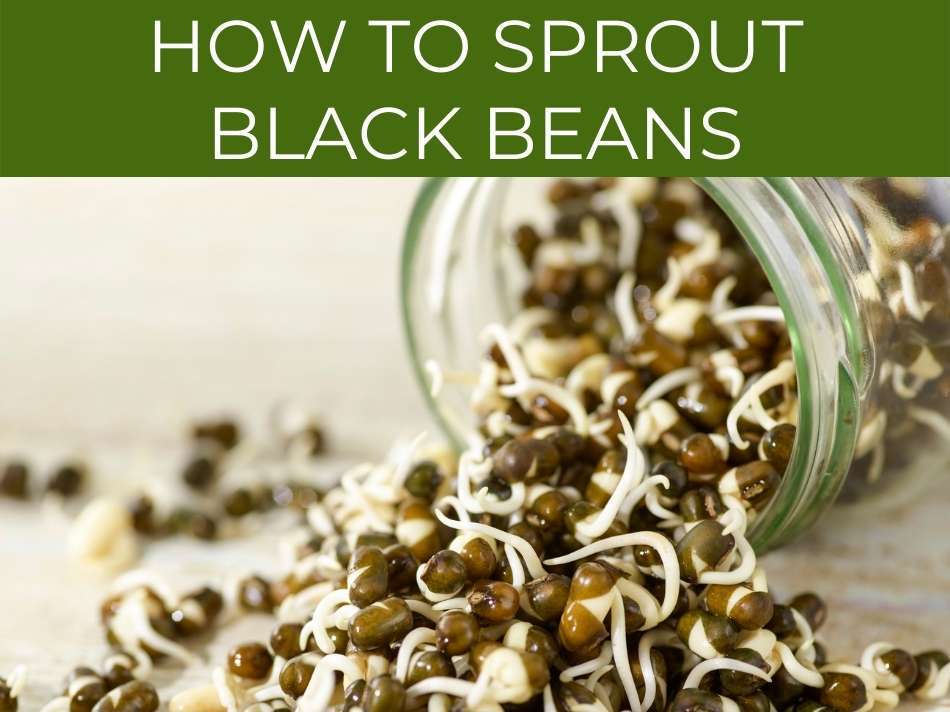
How to Sprout Black Beans
Black beans are grown and consumed all around the world.
However, no matter what tips and tricks are used in the process, the basics of the sprouting process remain the same.
To sprout black beans, rinse them to remove stones & debris. Cover beans with water, soak 4-6 hours. Drain the beans, & spread evenly on a paper towel; cover beans with a sprouting screen. Leave beans in a room-temperature location, watering to keep moist. Beans should sprout in 3-7 days.
Place black beans in a sprouting container or one quart-size jar.
Add two to three cups of water to 1/2 or 3/4 cup of black beans.
Cover jar with a sprouting screen or mesh sprouting lid.
Soak black beans in water for at least 8 hours.
Drain and rinse black beans.
Continue to drain the jar of beans at an angle to allow the beans to continue to drain and allow air to circulate.
Repeat the rinsing and draining process 3 to 4 times a day until you get the proper length sprout.
When sprout tails appear, taste the sprouts daily.
Stop rinsing and draining the beans when the desired length and flavor has been achieved.
Drain beans for several hours.
Cook beans or transfer to a covered container.
Learn the four basic ways to soak black beans.
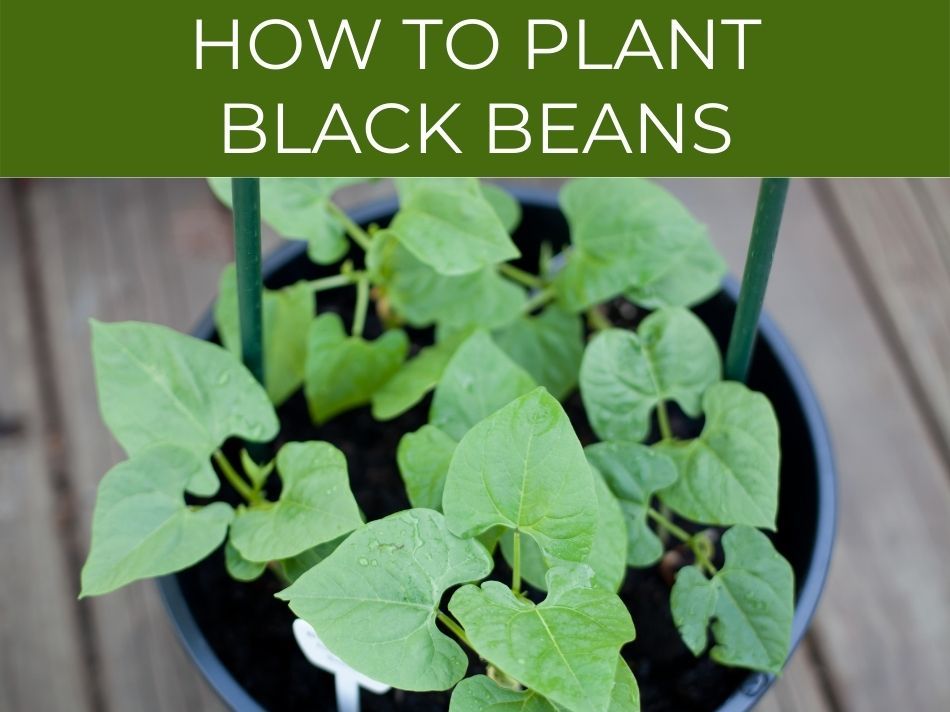
How to Plant Black Beans
To plant black beans, choose a location that will get about 6 – 8 hours of sun, is well fertilized, and able to drain.
Plant black beans about ½ – 1” deep and 3 inches apart in fertilized soil.
Once sprouted, seedlings should be about 15″ – 18″ apart to allow for growth.
The distance will allow the canopies of the plants to deter the growth of weeds.
It’s important to install pole sticks next to pole bean plants for vining variations.
Not all black bean plants will germinate.
When the plants begin to mature, thin plants to 6” apart.
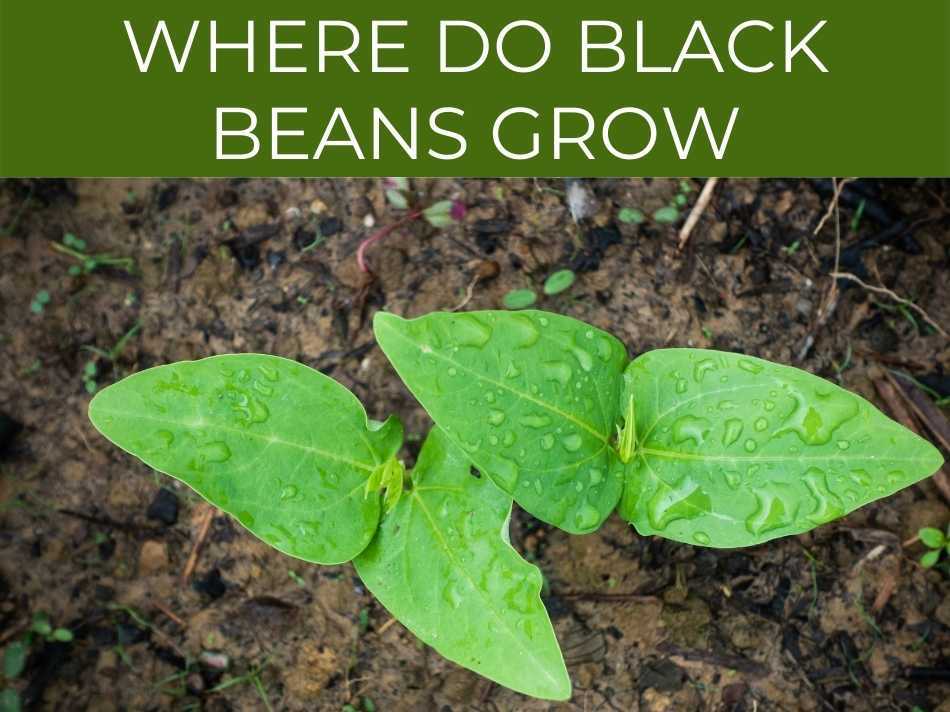
Where Do Black Beans Grow
Black beans grow all around the world.
Originally from Central America, Michigan is currently the largest producer of black beans. In the garden, black beans can be planted in a sunny area that receives 4-8 hours of sun, in fertile, well-drained soil.
Black beans are a hearty plant that don’t require much maintenance to survive.
Black beans will basically grow anywhere they are planted correctly that gets the proper amount of sunlight, shade, and water.
For black beans to grow properly, the area the black beans are planted in must have good drainage.
The beans are commonly used in Cajun, Latin American, and Creole cuisines.
The biggest producers of black beans are the United States, Mexico, Kenya, Uganda, India, and Brazil.
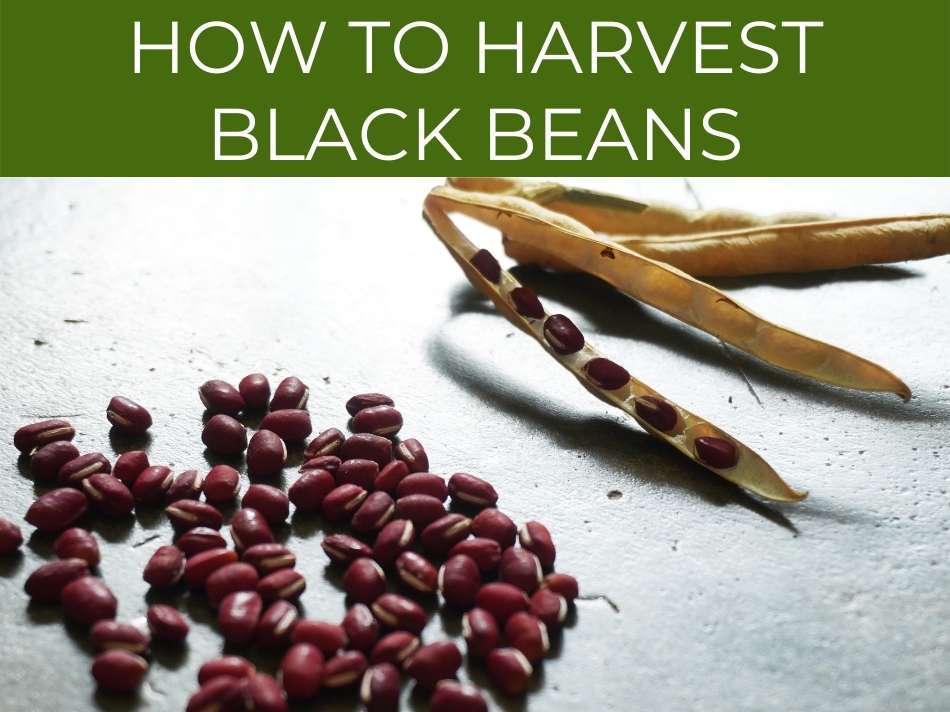
How to Harvest Black Beans
Unlike other types of beans, you have to shell a black bean and dry the bean before you can eat it.
It’s easy to know when a black bean is ready for harvest.
To harvest black beans, seed pods should be dry and dark brown to purple (depending on the variety), and bean seeds inside pods should be black and hard. Open the pods, and shake the beans into a container, then store in a cool, dry location.
The shell of the bean turns a dark, eggplant purple, which signals it has reached the height of its maturity and is ready to be harvested.
Alternatively, you can let the bean pods stay on the plant until they are crispy.
The black bean pods have to dry anyways, so there’s no reason you can’t let them dry on the plant.
Whether the black beans are picked at the height of their maturity, or you wait until the bean pods are crispy on the plant, the pod will retain its eggplant purple color.
After the bean pods are picked, you must open the pod and let the beans dry completely.
Do not eat black beans that have just been shelled.
Black beans must be completely dry and rinsed properly before consumption, or else they will cause you to get an upset stomach.
Check out other tips to harvest black beans and how to store them properly.

